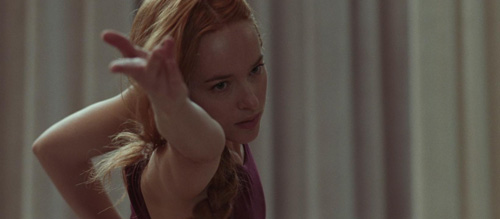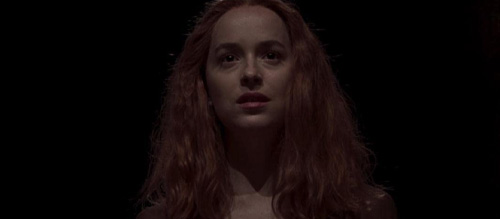Suspiria (2018) Review
Suspiria (2018)
Director: Luca Guadagnino
Screenwriter: David Kajganich
Starring: Dakota Johnson, Tilda Swinton, Mia Goth, Chloë Grace Moretz
It’s easy to forget about Luca Guadagnino’s 2018 remake of Suspiria. An underperformer at the box office and largely forgotten about outside of its own cult audience, this remake of a giallo classic came as quite the surprising follow-up to the Italian director’s coming of age favourite Call Me By Your Name. In spite of the director’s talents as a filmmaker, many still questioned his ability to remake what many already consider a masterpiece.
Although the question on everyone’s lips was whether it would be good or possibly even better than the original, it simply didn’t matter. Although a remake by name and premise, Guadagnino’s version of the classic works as more of an homage to the original, picking and choosing only a few similarities in story, themes and character. Almost everything is thrown out the window and made from scratch.
Similarly to the original film from horror maestro Dario Argento, Guadagnino’s remake is also set in Germany, this time in Berlin rather than Freiburg. The events of the 2018 film also take place in the same year as the original movie’s release, 1977. The basic story remains the same too: a young American, Susie Bannion (played here by Dakota Johnson), is accepted into an extremely prestigious dance school, run by a coven of witches.
Although there are similarities, and the basic plot remains the same, the mechanics within the movie are what bring out the biggest changes. This comes from the involvement of screenwriter David Kajganich who confessed he wasn’t a fan of Dario Argento’s original. Kajganich wanted to take a practical approach, showing how the coven would operate within the school. It is a wonderful approach that elevates the story, all the while paying its respects to the original. Moreover, Guadagnino’s willingness to take such a ballsy approach – remaking a classic and keeping little to none of the original vision – allowed for more freedom with the story, which he takes full advantage of by getting more from both the dance and witchcraft elements.
Because of the artistic freedom forged by Guadagnino and Kajganich, the director is able to inject himself entirely into this movie, stamping his own unique directorial vision onto the film as far as pacing and camera work goes.
One of the most significant features of the original Suspiria is also a regular feature throughout Guadagnino’s work: a beautifully bright and vibrant colour palette (just see A Bigger Splash and Call Me By Your Name). In many ways, Suspiria is famous for its visually stunning use of colour, yet Guadagnino strips this back, instead opting for a more bleak aesthetic. He still uses primary colours but decides to mute them to keep them understated. It is different from the original but still gorgeous in its own right.

Whereas Luca’s films usually stick to longer cuts between edits, Suspiria has a rather hectic editing style: short shot lengths, cutting more regularly, and making use of cutaways that aren’t always obvious in their meanings but which add to the mystique of the movie nonetheless. The cinematography is just as stunning, partnering beautifully with the editing to create some truly memorable scenes. In particular, the dancing feels much more focused on in this version of the film, with much more effort going into the choreography. Perhaps the greatest feats of this version are the scenes in which the dancing is juxtaposed with the horrors of the school, forcing us to swiftly switch between cringing at the horror and pain of one situation to then appreciating the beauty of the art in front of us – a truly sadistic style of filmmaking.
Perhaps the only loss of quality within Suspiria (2018) comes courtesy of how truly full it is. Every single sequence, scene, shot, line of dialogue seems to have some level of importance attached to it. Considering the movie is fifty-three minutes longer than the original, it is impressive just how much more they get from the story, yet so much information packed into such a long time means that it can be hard to keep up. Furthermore, there are scenes in which some of the importance in one moment is not always so clear and viewers may become fixated on these tiny moments, thus removing them from their immersion. Thankfully Luca Guadagnino always manages to bring us back into the world of Suspiria following any moments like these, a testament to the filmmakers abilities and to the strength of the screenplay from David Kajganich.
Although you may stray from this version of Suspiria out of fear that it won’t live up to the original or because they think they must watch the original first, you shouldn’t. Luca Guadagnino took a major risk with his take on Suspiria, one that sadly didn’t pay off at the box office but one that does pay off so far as making a good quality film goes. He takes an already great movie and simply makes it his own, creating a wonderfully brutal flick that solidifies him as an all-time great director, and Suspiria as an all time great remake.
Score: 20/24


